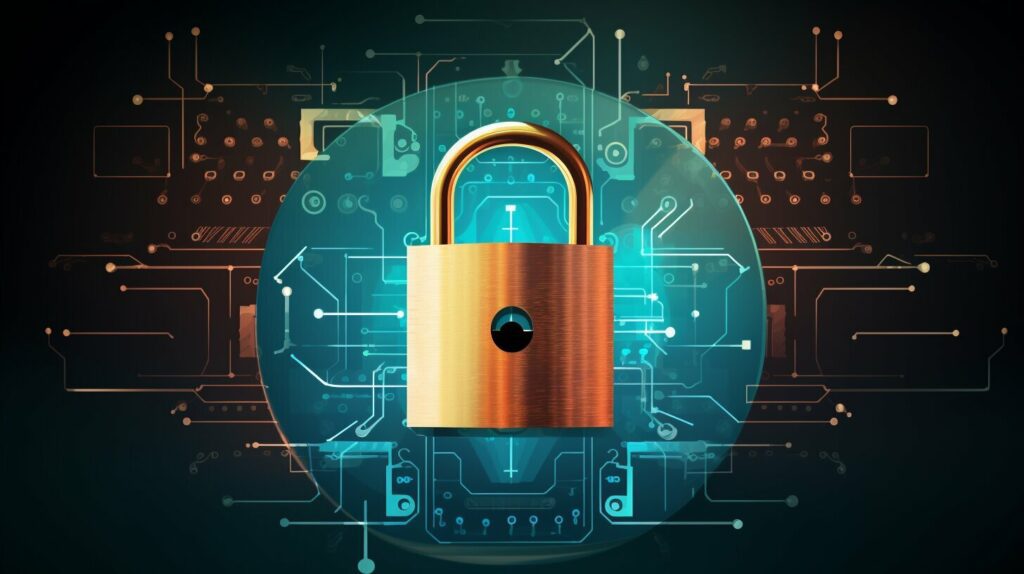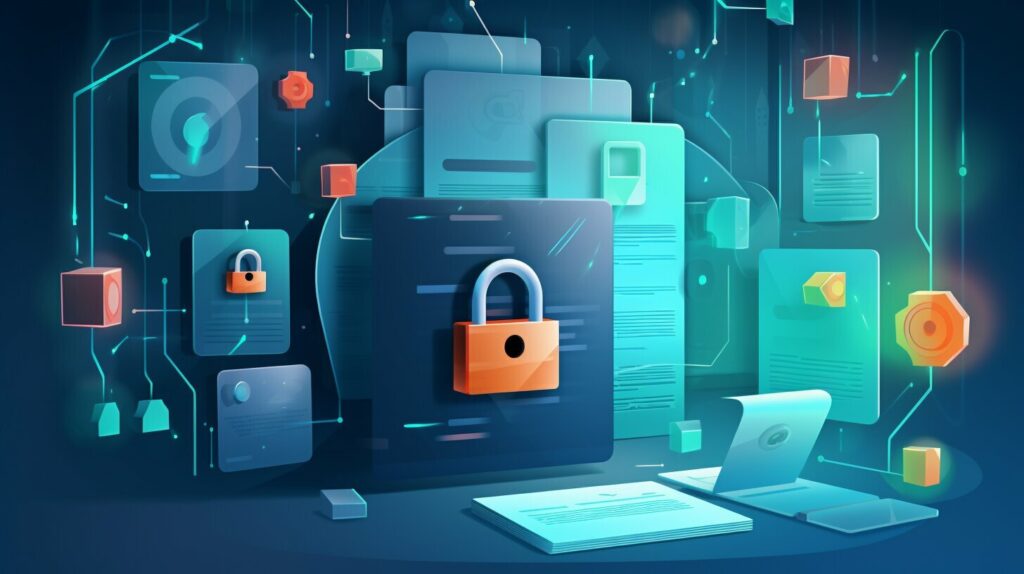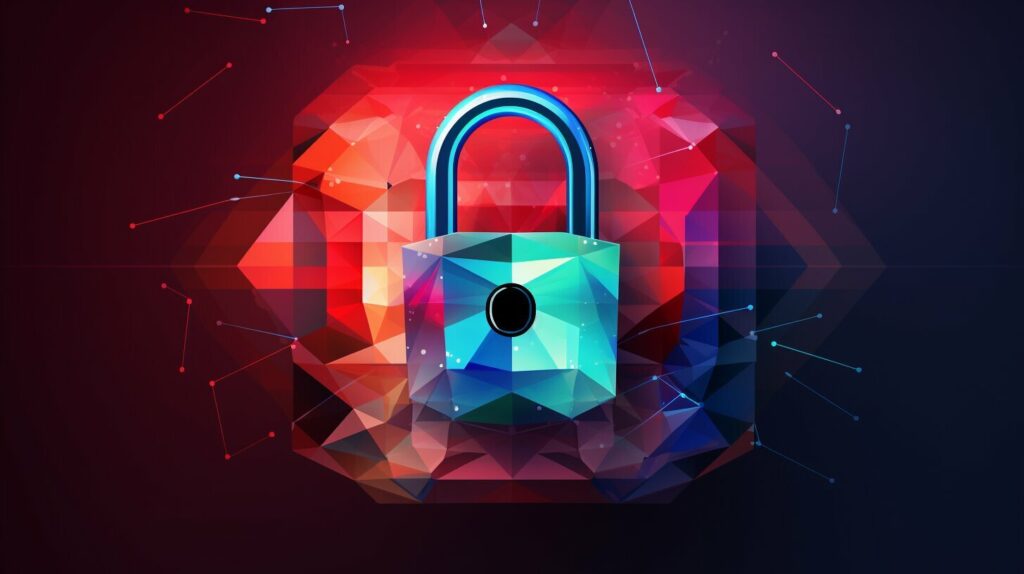In today’s digital age, email communication is a critical aspect of business operations. However, with the rise of cyber threats and data breaches, it’s more important than ever to ensure your email security is up to par. This is where the GDPR regulations for email protection come into play.
The GDPR, or General Data Protection Regulation, is a set of regulations that came into effect in May 2018. These regulations apply to any company that handles the personal data of EU citizens, and failure to comply can result in hefty fines.
When it comes to email communication, the GDPR has specific guidelines to ensure data protection, privacy, and compliance. In this article, we will discuss the key steps you need to take to achieve GDPR compliance for email protection, as well as the tools and technologies available to help enhance your email security.
Key Takeaways:
- The GDPR regulations for email protection are crucial for data protection, privacy, and compliance.
- Compliance with GDPR regulations is mandatory for any company that handles the personal data of EU citizens.
- Ensuring email security is an essential aspect of business operations in today’s digital age.
Understanding GDPR Regulations and Email Security
The European Union’s General Data Protection Regulation (GDPR) went into effect on May 25th, 2018, and it has far-reaching implications for businesses worldwide. One of the key areas affected by GDPR is email protection. GDPR compliance entails protecting personal data, such as email addresses, and ensuring email privacy and security.
Under GDPR regulations for email protection, businesses are required to obtain explicit consent from individuals before collecting and processing their personal data, including email addresses. Additionally, businesses must ensure that personal data is kept secure and confidential.
What is Email Security?
Email security is the practice of protecting email and the data it contains from unauthorized access, use, and disclosure. Email security measures include encryption, spam filtering, virus scanning, and access controls. These measures ensure that sensitive information transmitted via email remains confidential and secure.
Why is GDPR Compliance Important for Email Security?
GDPR compliance is crucial for email security because it helps ensure that personal data transmitted through email is protected from unauthorized access and use. The regulation requires businesses to implement appropriate technical and organizational measures to safeguard personal data, including email addresses.
Failure to comply with GDPR regulations for email protection can result in severe penalties, including fines of up to €20 million or 4% of a company’s global revenue, whichever is greater. Therefore, it is essential for businesses to understand and follow GDPR guidelines for email protection.
How Can Businesses Ensure GDPR Compliance for Email Protection?
Businesses can achieve GDPR compliance for email protection by implementing several measures, including:
- Obtaining explicit consent from individuals before collecting and processing their personal data, including email addresses
- Implementing appropriate technical and organizational measures to safeguard personal data, such as email encryption and access controls
- Ensuring that third-party processors comply with GDPR regulations, including those related to email protection
By following these steps, businesses can help ensure that they are compliant with GDPR regulations for email protection, protecting personal data and avoiding potentially costly fines and penalties.
Steps to Achieve GDPR Compliance for Email Protection
Compliance with the EU’s General Data Protection Regulation (GDPR) for email protection is critical for businesses that handle personal data. Here are some steps to ensure GDPR compliance and protect sensitive email data:
| Step | Description |
|---|---|
| 1 | Conduct a data inventory and classification of all email data to determine what personal data is being processed. This includes reviewing all email dataflows, storage, and employee access. |
| 2 | Ensure that email data is processed fairly and transparently. This means that businesses should have a lawful basis for processing personal data and provide clear privacy notices to individuals, informing them of their rights. |
| 3 | Implement security measures such as email encryption, access controls, and intrusion detection to ensure that personal data is secure from unauthorized access or disclosure. |
| 4 | Appoint a Data Protection Officer (DPO) to oversee GDPR compliance and provide training to all employees on data protection and the GDPR regulations for email protection. |
| 5 | Develop an incident response plan to handle any breaches of personal data, including reporting breaches to the supervisory authority and notifying affected individuals where necessary. |
By following these steps, businesses can achieve GDPR compliance for email protection and ensure that personal data is processed and stored securely. However, it is important to note that GDPR compliance is an ongoing process that requires regular review and updates to stay up-to-date with the evolving regulatory landscape.

Email encryption is one of the critical steps to ensure GDPR compliance for email protection.
Enhancing Email Security: Best Practices for Data Protection
While implementing GDPR regulations for email protection is crucial, it is equally important to follow best practices for data protection to enhance email security. By following these practices, you can reduce the risk of data breaches and ensure GDPR compliance. Here are some of the best practices:
1. Use Email Encryption
Email encryption is a process of converting email messages into unreadable code that can only be deciphered with a private key. By using email encryption, you can protect your email communication from unauthorized access, and ensure GDPR compliance. Many email providers offer email encryption as a built-in feature, while some require third-party plugins. Make sure to use email encryption for all sensitive data.
2. Implement Access Control
Access control is the process of limiting access to sensitive data to only authorized personnel. By implementing access control, you can ensure that only authorized personnel have access to the sensitive data, and reduce the risk of data breaches. Make sure to have strict password policies, and limit physical access to equipment that contains sensitive data.
3. Train Employees on Safe Email Practices
Employees are often the weakest link in email security. It is crucial to train employees on safe email practices. They should be aware of the risks of opening attachments or clicking on links from unknown sources. Make sure to have regular training and awareness programs to keep employees up to date on the latest email security best practices.
4. Use Anti-Malware and Anti-Spam Software
Anti-malware and anti-spam software can significantly reduce the risk of data breaches. These software programs can detect and quarantine malicious emails, preventing them from reaching the intended recipient. Make sure to have up-to-date anti-malware and anti-spam software installed on your email server to ensure email security.
“By following best practices for data protection, you can reduce the risk of data breaches and ensure GDPR compliance.”
Email Compliance Tools and Technologies
To ensure email compliance with GDPR regulations for email protection, businesses can leverage various tools and technologies. Here are some of the popular options:
| Tool/Technology | Function |
|---|---|
| Email Encryption | Encrypts email messages to prevent unauthorized access and ensure email privacy. |
| Email Archiving | Stores email messages to comply with data retention requirements and provide easy access to email records when needed. |
| Data Loss Prevention (DLP) | Scans email messages for sensitive data and prevents data loss or leakage by restricting access or blocking email transmission. |
| Email Filtering | Filters incoming and outgoing email messages to block spam, phishing, malware, and other email-based threats. |
These email compliance tools and technologies can help businesses achieve GDPR compliance for email protection by ensuring email data security, privacy, and confidentiality.
In addition to these tools, businesses can also adopt other measures such as conducting regular email security awareness training for employees, implementing strict access controls and permission levels for email data, and conducting comprehensive email audits to identify and mitigate potential risks and vulnerabilities.
By adopting these measures, businesses can ensure GDPR compliance for email protection and safeguard the personal data of their customers, employees, and stakeholders.

Maintaining GDPR Compliance in the Evolving Landscape
Staying compliant with the General Data Protection Regulation (GDPR) in the ever-changing landscape of technology can be a challenge. As new technologies emerge, regulations are adapted to meet the new challenges they present. To maintain GDPR compliance in your email protection, it’s important to stay up-to-date on any changes and their potential impact on your organization.
The European Union (EU) is constantly evaluating the GDPR and making changes to ensure that it remains relevant and effective. These changes can impact how your organization collects, processes, and stores data, so it’s crucial to stay informed and adjust your email protection strategies accordingly.
Keeping Up with Changes
One of the best ways to maintain GDPR compliance in your email protection is to stay current on any changes to the regulations. Ensure that your organization subscribes to industry publications, attends relevant conferences, and engages with GDPR experts who can provide guidance on how to adjust your email protection strategies in response to any changes that may occur.
Additionally, monitoring the official GDPR website regularly can help you stay informed about any updates or new regulations that may impact your email compliance strategy. Regularly checking the website for updates will enable you to swiftly adjust your email protection strategies to ensure you remain compliant with all relevant regulations.
Training Your Team
Keeping your team informed and up to date with GDPR regulations is vital for maintaining compliance in your email protection. Regular training sessions can help ensure your employees are aware of their responsibilities when it comes to data protection and email privacy.
You can also create a culture of compliance within your organization by encouraging team members to report any potential email security issues or breaches promptly. Encourage a proactive approach to email protection and ensure everyone understands the impact of noncompliance on the organization, its reputation, and its customers.
Partnering with a Technology Provider
Partnering with a technology provider that specializes in email compliance and data protection can help your organization stay compliant with GDPR regulations. These providers typically offer a comprehensive suite of email protection tools and technologies that can help your organization secure and protect email data.
When selecting a technology provider, it’s important to choose one that is experienced and knowledgeable in GDPR regulations and email security. Look for providers that offer continual support and monitoring to ensure your organization remains compliant with all relevant regulations.
Staying compliant with GDPR regulations can be challenging, but maintaining compliance in your email protection is critical. By staying informed and adapting your email protection strategies to meet any changes, training your team to be proactive in maintaining compliance, and partnering with a technology provider that specializes in data protection and email compliance, you can ensure that your organization remains compliant with all relevant GDPR regulations.
The Business Benefits of GDPR Compliance for Email Protection
While GDPR compliance may seem like an added burden for businesses to ensure email security and data protection, it can also offer various benefits.
Enhanced Trust: GDPR regulations for email protection help businesses gain trust among their clients by demonstrating their commitment to data privacy and security.
Improved Reputation: By complying with GDPR regulations, businesses can maintain their reputation as responsible and trustworthy organizations. This can help retain customers and attract new ones.
Better Data Management: GDPR compliance requires businesses to have a detailed overview of their data processes, which can lead to better data management.
Reduced Risk of Fines and Legal Actions: By staying GDPR compliant, businesses avoid the risk of hefty fines and legal actions that can result from compromising email security and data protection.
Competitive Advantage: GDPR compliance can set businesses apart from their competitors by demonstrating their commitment to protecting customer data and prioritizing email security.
Overall, GDPR compliance for email protection can provide businesses with a competitive edge and a more positive reputation, leading to improved customer loyalty and a reduction in legal risks.

Conclusion
In conclusion, mastering GDPR regulations for email protection is crucial for businesses who value their data and wish to remain compliant and secure. Understanding how these regulations work and taking the necessary steps to achieve compliance can go a long way in enhancing email security and data protection.
Implementing email compliance tools and technologies and following best practices for data protection can further bolster email security. It is also important to keep up with evolving GDPR regulations and ensure compliance with EU data protection laws.
While achieving GDPR compliance for email protection may require some effort and investment, the benefits can outweigh the costs. Businesses not only safeguard their data but also build trust and credibility among their customers and other stakeholders.
Takeaway
Businesses should prioritize GDPR compliance for email protection as it plays a vital role in securing data and maintaining trust with customers and stakeholders. By following the steps outlined in this article, businesses can achieve compliance and ensure their email data security.
FAQ
Q: What are GDPR regulations for email protection?
A: GDPR (General Data Protection Regulation) regulations are a set of rules established by the European Union to protect the personal data and privacy of EU citizens. When it comes to email protection, GDPR requires organizations to implement measures to secure sensitive data and ensure compliance with data protection policies.
Q: How can I achieve GDPR compliance for email protection?
A: To achieve GDPR compliance for email protection, you should take the following steps:
1. Conduct a data protection audit to identify potential risks.
2. Implement proper email security measures, such as encryption and secure access controls.
3. Establish policies and procedures for data handling and breach notification.
4. Train employees on GDPR regulations and best practices for email security.
5. Regularly monitor and update your email security measures to stay compliant.
Q: What are the best practices for enhancing email security and data protection?
A: Here are some best practices for enhancing email security and data protection:
1. Use strong and unique passwords for email accounts.
2. Enable two-factor authentication for added security.
3. Regularly update software and security patches.
4. Encrypt sensitive emails and attachments.
5. Be cautious of phishing attempts and suspicious email attachments or links.
Q: What tools and technologies are available for email compliance?
A: There are several tools and technologies available to aid in email compliance, such as:
1. Email encryption software.
2. Data loss prevention (DLP) solutions.
3. Email archiving and retention systems.
4. Secure email gateways.
5. Email compliance management software.
Q: How can I maintain GDPR compliance in the evolving landscape?
A: To maintain GDPR compliance in the evolving landscape, you should:
1. Stay updated on changes and updates to GDPR regulations.
2. Regularly review and update your email security measures.
3. Conduct periodic audits to identify and address any compliance gaps.
4. Train employees on new regulations and best practices.
5. Stay informed about new technologies and tools that can enhance your email security and compliance.
Q: What are the business benefits of GDPR compliance for email protection?
A: GDPR compliance for email protection offers several business benefits, including:
1. Enhanced customer trust and loyalty.
2. Reduced risk of data breaches and associated fines.
3. Improved reputation and brand image.
4. Increased operational efficiency through better data management.
5. Increased competitive advantage in the marketplace.
Q: Are there any case studies showcasing successful implementation of GDPR regulations for email protection?
A: Yes, there are case studies available that showcase successful implementation of GDPR regulations for email protection. These case studies highlight how organizations have achieved compliance, improved email security, and protected customer data while adhering to GDPR regulations.





